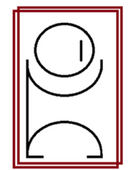5 Creative Ways to Fit Exercise into Your Daily Activities

Finding time to exercise can be a challenge, especially when you're juggling work, family, and personal responsibilities. The good news is, you don’t always need to set aside a full hour at the gym to stay active. With a little creativity, you can turn everyday tasks into opportunities for movement. Here are five simple ways to incorporate exercise into your daily activities, helping you stay fit without disrupting your routine.
1. Turn House Cleaning into a Workout 🧹💪
Chores like vacuuming, mopping, and dusting can be great opportunities to get moving and work up a sweat. The key is to be intentional about your movements and use your cleaning time as a mini workout session.
How to do it: While vacuuming or mopping, engage your core and try doing lunges or squats as you move across the room. Add extra intensity by moving at a brisk pace or turning on some upbeat music to keep you motivated.
2. Take the Stairs 🚶♀️🏢
Skipping the elevator and opting for the stairs is one of the easiest ways to sneak in some cardio throughout the day. Stair climbing is a fantastic way to strengthen your legs, improve cardiovascular health, and burn calories.
How to do it: Instead of taking the elevator or escalator, make it a habit to use the stairs whenever possible. If you have stairs at home, you can even do a quick set of stair sprints or step-ups while taking a break from work or studying.
3. Do Squats While Brushing Your Teeth 🪥🏋️
We all brush our teeth twice a day, so why not use that time to squeeze in some exercise? Squats are a simple yet effective move that can tone your lower body, improve balance, and boost your metabolism.
How to do it: As you brush your teeth for two minutes, stand with your feet shoulder-width apart and perform squats. Make sure to keep your back straight and your weight in your heels as you lower your body. By the time you're done brushing, you'll have completed a quick leg workout!
4. Stretch While Watching TV 📺🧘♀️
Instead of sitting passively during your favorite TV show or movie, use that time to stretch or do light exercises. This can help improve flexibility, reduce stiffness, and increase circulation after a long day of sitting or working.
How to do it: During commercial breaks, stand up and do some stretching exercises like toe touches, calf raises, or shoulder rolls. If you're feeling more energetic, try some bodyweight exercises like planks, push-ups, or jumping jacks while watching TV.
5. Walk and Talk 🚶♂️📞
If you spend time on phone calls throughout the day, turn those moments into walking opportunities. Walking while talking is a great way to boost your step count, increase circulation, and get some fresh air if you're able to walk outside.
How to do it: Instead of sitting at your desk or on the couch during phone calls, get up and walk around your house, office, or even outside. Walking meetings and calls are a great way to stay active while being productive.
Final Thoughts
Fitting exercise into your daily routine doesn’t have to be complicated or time-consuming. By incorporating movement into everyday activities, you can stay active and maintain your fitness without needing extra time in your day. Start with these five simple tips, and you’ll soon find that staying fit can be a natural part of your daily life!





